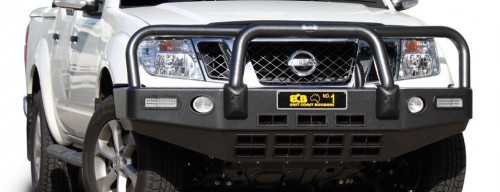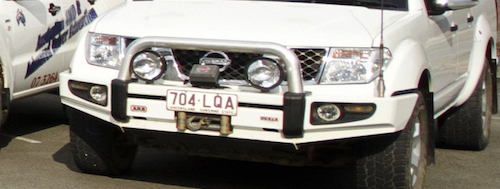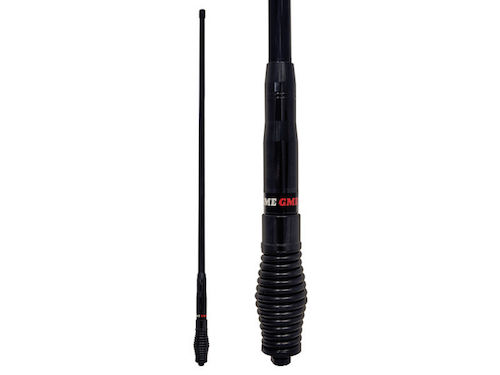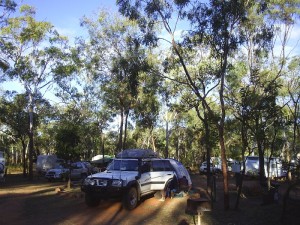Vehicle preparation is a very important function of trip preparation and should be taken very seriously. We have listed below some suggestions, as we believe are necessary but advise that there may be many more items that require your attention if your vehicle is more than 12 months and or has more than 60,000 km.
- The air cleaner should be new be new and a new element carried securely in the vehicle.
- Washable foam filters if used may require servicing during the trip.
- Before departure have the engine oil and filter changed.
- Change all drive line oils if service periods will fall during trip.
- Replace radiator coolant (don’t use water).
- Ensure radiator fins are clean and free of grass and bugs.
- Check all hoses; replace if soft or leaking.
- CV & universal joints need to be checked and replaced if suspect.
- Check all belts for wear and cracking.
- Have the visco fan checked.
- A bug screen should be fitted to cover the entire radiator.
- Windscreen washers must be in working order.
- Wiper blades should be replaced annually and the silicon types out last the standard rubber type.
- Tyres must be 70% rotate, balance and align.
- All wheel nuts should be lubricated with an “anti seize” before retentioning. Locktite is the brand we have used in the past.
- Suspension needs to be checked for bush wear and shock function. “ Fulcrum” is the specialists who we recommend. A suspension failure can have a major effect on the enjoyment of your trip.
- Brake pads and disc checked for wear (70%) have carried out a brake efficiency test.
- Batteries need to be load tested. Replace if the battery does not perform 100%.
- Alternator should be tested and checked.
- Starter motor should be load tested.
- All electrical connections should be checked and secured.
- The clutch should be checked under load and adjusted if necessary.
- Automatic transmissions may require a full pressure test and service.
- Numberplates need to be secured with 2 screws or bolts at the top and the bottom front and rear.
Accessories
Bull bar that is lightweight, aluminium is the best option (ECB, East Coast Bars).

Driving lights need to be mounted securely, plastic or moulded will not last.

Dual batteries are a definite advantage. “Odyssey” dry cell type batteries are proven to out last and out perform the standard battery many times over.
The battery isolation switch should be a solenoid type for reliability, not a transistorised.

UHF Radio aerials should not be too flimsy. GME radios and antennas have proven to be the best over all. The installation should be carried out by professionals, “Mobile Communication” are suppliers, installers and repairers of “Codan” RFDS systems to “ Australasia” and therefore have highly skilled staff.
The area we will be travelling in is challenging to machinery and repairs that are required on the trip will effect the overall enjoyment for others and may cost you the owner many times more than the cost at the local garage.
Any part that is considered to be at all suspicious replace it and keep the old part if serviceable.

Recommended Equipment
- A “Snatch strap” 8M
- “Bow Shackles”
- Spare headlight and park bulbs and 5 of each type of fuse 5amp, 10amp 15 and 20(Dealer)
- A light tool kit (vehicle kit)
- Tyre changing tools and working jack. (Vehicle kit)
- Six tyres that are all the same type and tread. The second spare tyre, not on a rim.
- Tyre gauges.
- Fire extinguisher.
- First aid kit for the car.
- Driving lights are recommended one spot and one spreader, Metal only and ensure that they are secure before departure. (Spare bulbs and clear covers)
 Which car fridge and what size? The two that we recommend are the “Waeco” and the “Engel” both are well made and work well in the tour application. The waeco is about $3-400 cheaper.
Which car fridge and what size? The two that we recommend are the “Waeco” and the “Engel” both are well made and work well in the tour application. The waeco is about $3-400 cheaper.
Make sure the fridge is bolted to the floor with secure anchorage points.
Avoid using a temporary wiring installation or the cigarette lighter plug. A circuit breaker or fuse should be wired into the system.
A second spare tyre can be a bit of a nuisance inside most vehicles. We suggest that this is where the aluminium roof rack is a wise purchase. (ECB, East Coast Bull Bars or Roof Racks Galore).
Securing cargo
A cargo barrier is a strong recommendation that we make. The barrier keeps the luggage in the right place as well as allowing more gear to packed in that area. When having one fitted ensure the barrier is fitted up to the back seats approx 100mm away and the holes are drilled for the front location. Again have this set as close to the front seats as possible. This will allow for more available space. Upholstery plugs should be fitted to those drilled in the roof lining for the front position. Before paying for the job have the barrier fitted to both positions so that you can see where and how the barrier is fitted.
The cargo can be secured with lightweight ratchet straps anchored to the floor. Whichever ways you choose to secure your load consider the effects if the cargo does come loose in an accident.
Water
Your daily intake of 2-3lts of water has to be consumed through out the whole day so inside the vehicle, 2lts per person is recommended.
Each vehicle must carry minimum 20lts of water as back up.
Fuel
Your vehicle is required to have a range of 500km. Plastic ** fuel containers may be used to supplement the standard fuel capacity. When full these containers should not be carried inside the vehicle and can be carried empty for most of the trip. (**approved type only)
All work needs to be thoroughly checked and tested after installation allowing time for any faults to be rectified before departure.
Training
It is recommended for all drivers to complete a Australian 4WD Driver Training Course before departure, as this will make your trip safer and more enjoyable.
Camping Equipment
There are numerous styles of tents available. If you have a tent, use that one. However, if the purchase of a tent is in the equipment purchase plan, then we have the following suggestions to make.
A tent has to not only protect you from the elements but needs to be reasonably light and should not take up too much space. There are various types available that are light and very compact for about $400. A strong floor and a detachable cover are important. A piece of shade cloth that is larger than the base of the tent and protruding out so that the entrance is covered is a suggestion. This allows for the dirt to be left outside the tent when entering. A quick shake before folding up disposes of the accumulated dirt. A lightweight tarp with weight poles will offer additional protection from the sun and rain.
- Tent (screens)
- Sleeping Bag
- Pillows
- Air mattress or equivalent.
- Air pump where applicable
- Torch
- Tent light
- Chairs and table
Weather
The road and weather conditions can have an effect on any out door activity. We have contingency plans in place for the majority of our trips. It is advisable to pack for the possibility of wet weather.
The nights can be cool by comparison to the days, so warm gear may be necessary for some people.
Personal Items
Pack a washer, towel, and toilet paper and in a toilet bag put soap; tooth paste, brush, floss, personal medication, sunscreen, hat, fly screen, insect repellent etc.
Clothing
Avoid taking more than necessary. Warm gear may be appreciated during the cooler evenings. Where possible cotton works well and long sleeves are better for sun protection. Include a small pack of washing powder, a few pegs and a length of light rope for a cloth line. Covered foot wear and light slip on type shoes offer better protection than thongs.
Passengers
Care and safety of our passengers is important. Keeping track of the trip, recording the fuel used, the distance per litre, games, light food, music, and pillows will assist in making the overall trip more enjoyable for all of your occupants.
Travel insurance
Some policies are not clear on the cover for off road travel. We suggest that all possibilities are covered and for as little as $50 per year support can be available if an incident is outside the capabilities of The Expedition.
Carry a copy of rego and insurance doc. In your vehicle.
RACQ Ultra Care
Don’t leave home without it………….
